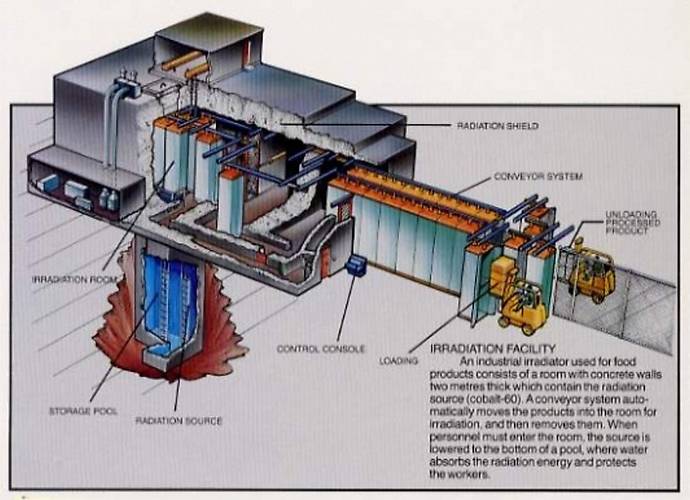Irradiation process equipment diagram
By Michael Doyle; posted October 11, 2008
View Original: Click to zoom, then click to magnify (1183 x 857) 142KB

|
There is a common misconception that irradiated material is left with residual radioactivity. The radiation used to process foods is very different from the radioactive fallout that occurs after, for example, a nuclear accident. In food processing, the radioactive source never contacts the food and the sources used emit only gamma rays and no neutrons. Without being bombarded by neutrons, no material can become radioactive. The material is exposed to ionizing radiation, either from gamma rays (Cobalt 60 or Cesium 137) or a high energy electron beam or powerful X-rays. Gamma rays and X-rays are a form of radiation that share some characteristics with microwaves, but have much higher energy and penetration power. The rays pass through the food just like microwaves in a microwave oven, but the food doesn't heat up to any significant extent and organisms that are responsible for spoiling foods - such as insects, moulds and bacteria including some important food poisoning bacteria - can be killed. Food irradiation does not kill viruses. This same equipment is used to irradiate glass. The irradiation of glass is neither illegal nor regulated. Dealing in irradiated glass is a growing and profitable business. At a recent show I saw evidence that the Asians are entering the market. Gem stones are also being Irradiated in huge quantities. Irradiated glass is VERY popular among collectors and shows no sign of decreasing in popularity. |